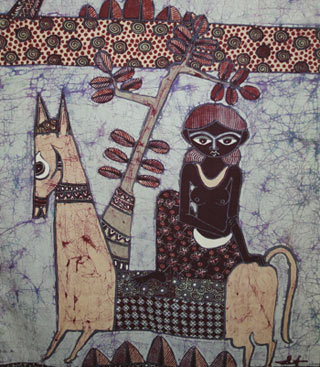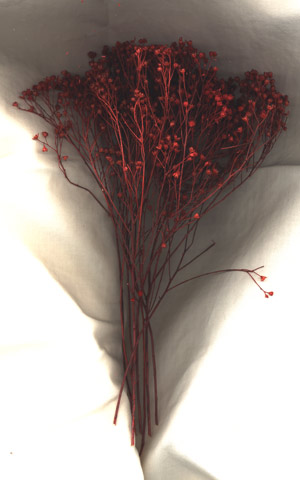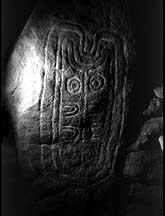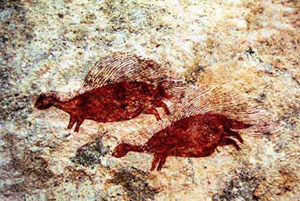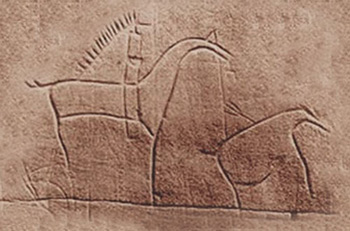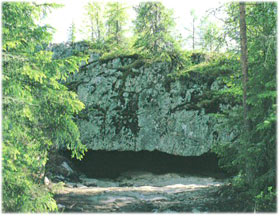ORIGINS Centre
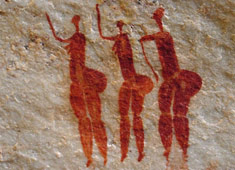
One example of the rock art in the Wits University collection, which is probably the largest in the world (Image: Origins Centre)
From the City of Johannesburg comes this exciting news for archaeology and anthropology fans like me: Origins Centre traces history of mankind, written by Ndaba Dlamini.
My summary: On March 7th, 2006 President Thabo Mbeki officially opened the University of the Witwatersrand’s Origins Centre, the world’s only museum dedicated to exploring and celebrating the history of modern humankind. The first phase of the museum showcases the origins of humankind as well as an extensive collection of rock art from the Wits Art Research Institute. Many of the diverse exhibits bring to life the heritage of the San, whose DNA contains the earliest genetic print, linking this hunter-gatherer to the Homo sapiens who lived 160,000 years ago. For the first time in South Africa, archaeology had been brought to people to appreciate and no longer would people regard rock art as “crude”, Mbeki said.
Very unique is that the Origins Centre is inviting South Africans and international tourists to have their DNA tested to determine their ancestry – and have the results exhibited alongside those of Nelson Mandela. Read more about it in Are you related to Mandela? Fascinating!
If I was traveling to South Africa, the Origins Centre would be on top of the list of places to visit. Their website appears to be still under development, but there is more at South Africa Info including great links including the fabulous Rock Art Gallery.
More related links and images:
Rock Art Research Institute
Bradshaw Foundation
my earlier page on South African rock art
Met Museum

